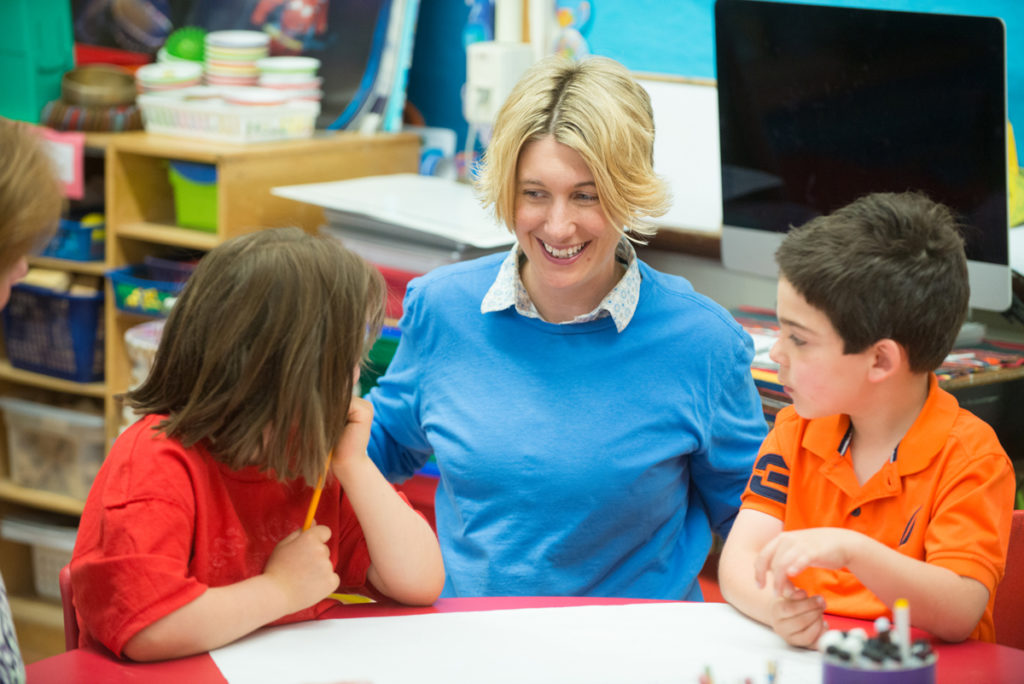
 I’d like you to try a challenge I used to give myself several times a year when I was a classroom teacher. First, divide a piece of paper into three columns. In the first column, make a list of your students. Try not to use alphabetical order, grade book order, or table groups to help you remember. Just write the names down as they come to mind.
I’d like you to try a challenge I used to give myself several times a year when I was a classroom teacher. First, divide a piece of paper into three columns. In the first column, make a list of your students. Try not to use alphabetical order, grade book order, or table groups to help you remember. Just write the names down as they come to mind.
Then, in the middle column, next to each child’s name, write one thing you know that child likes to do or cares passionately about.
In the third column, make a star if you’re sure the child knows that you know this about her or him.
When I’d do this exercise (which I learned from Donald Graves, the great writing guru), the results were often humbling but powerful. Occasionally, there were one or two students it took me a while to remember for the first column—I took that as a sign that I needed to spend more time with them.
Sometimes, in the second column, I didn’t know much of anything about a child’s interests, or I listed the same interest I had the last time I did this exercise. That told me I needed to find out more about the child’s gifts and hopes—perhaps by having a private lunch, taking extra time to chat at arrival, or spending a few minutes together at recess.
The names without stars in the third column sent me a message about students I might have unintentionally been taking for granted. Rather than just assuming they knew I cared about and appreciated their talents and interests, I needed to connect with them.
I included this exercise in my book, Teasing, Tattling, Defiance, and More: Positive Approaches to 10 Common Classroom Behaviors, because one of the overarching themes of the book is the importance of building and maintaining positive teacher-student relationships.
Teachers who know their students well are able to see children’s struggles with behavior expectations within the larger context of each individual’s particular strengths and gifts. Students who have positive relationships with their teachers trust us and our responses to misbehavior. And knowing students well is essential if you want to engage them (and their parents!) in working with you to address or change problem behaviors.
When I taught children whose behavior was especially challenging, and I did this exercise, those children’s names usually appeared near the top of the list—how could I forget them? However, I sometimes had trouble filling in the second column, or I couldn’t put a star in the third. I realized that when I thought of those children, what first came to mind were their problem behaviors. There was much more to them, but I had to work to see it. When I did that work, our relationships improved, and I was able to address the problem behaviors more effectively.
Building positive teacher-student relationships is work that continues throughout the school year, and one of the aspects of teaching where there’s always room to improve. Give the exercise a try. I hope you find it as helpful as I did!
Teasing, Tattling, Defiance, and More: Positive Approaches to 10 Common Behavior Problems, by Margaret Berry Wilson
“This book is positive, practical, and should be in the hands of every teacher. After reading it, I ordered a copy for every counselor, assistant principal, behavior coach, and resource teacher in our district!”
—Glenna Hess, Jefferson County Public Schools, Louisville, KY
Margaret Berry Wilson is the author of several books, including: The Language of Learning, Doing Science in Morning Meeting (co-authored with Lara Webb), Interactive Modeling, and Teasing, Tattling, Defiance & More.